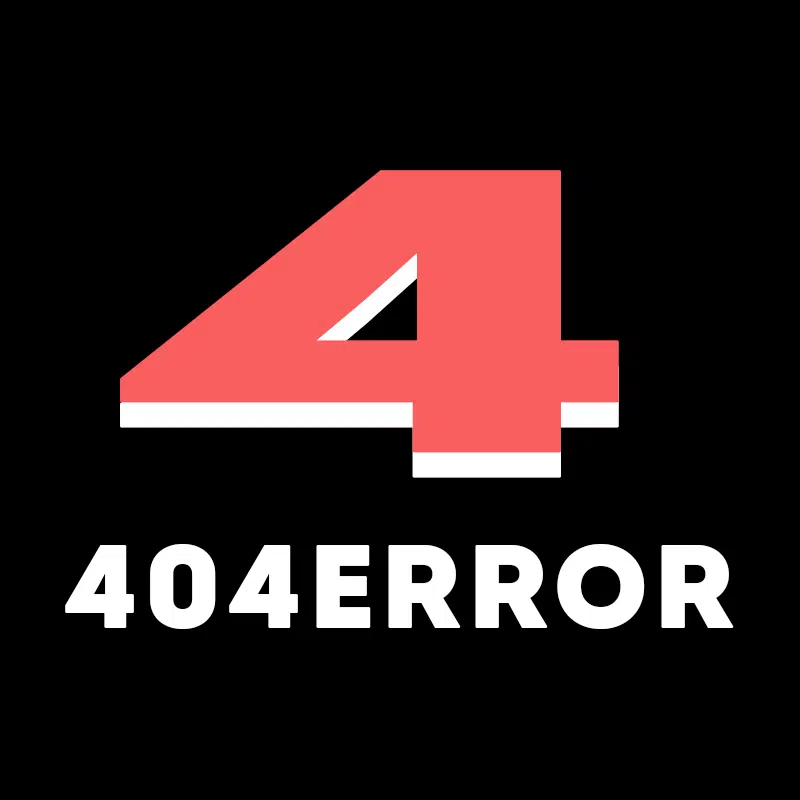EBM (Electronic Body Music): La revolución industrial de la música electrónica (1982-1992)

La Electronic Body Music (EBM) es un género que nació en la encrucijada entre la música industrial, el synthpop y el punk, marcando una de las épocas más vibrantes e innovadoras en la música electrónica entre 1982 y 1992.
Este estilo se caracteriza por sus ritmos marciales, bajos contundentes y voces agresivas, creando una energía que conectaba tanto con los clubes underground como con las audiencias más alternativas.
Durante su década dorada, la EBM definió el sonido de una generación, influenciando no solo a la música electrónica posterior, sino también al desarrollo de subgéneros como el techno industrial, el electro y el darkwave.
Orígenes y desarrollo de la EBM
El término Electronic Body Music fue acuñado por el dúo belga Front 242, quienes definieron el género como una mezcla de sonidos mecánicos y ritmos bailables que conectaban con el cuerpo y la mente.
Inspirada por la estética del punk y la música industrial de los años 70, la EBM integraba sintetizadores analógicos, cajas de ritmo contundentes y letras que oscilaban entre el nihilismo, la crítica social y el futurismo.
El género floreció en Europa, especialmente en Bélgica y Alemania, aunque su influencia se extendió rápidamente a países como Suecia, Francia, Canadá y Estados Unidos.
más...
Artistas imprescindibles de la EBM (1982-1992)
Pioneros del género:
- Front 242: Considerados los padres de la EBM, definieron el sonido del género con álbumes como Geography (1982) y Front by Front (1988), que incluye el clásico “Headhunter”.
- DAF (Deutsch Amerikanische Freundschaft): Precursores alemanes que combinaron minimalismo electrónico con letras provocadoras en álbumes como Alles ist gut (1981) y Für immer (1982).
- Nitzer Ebb: El trío británico que llevó la EBM a una dimensión más agresiva con temas como “Join in the Chant” y álbumes como That Total Age (1987).
- Die Krupps: Desde Alemania, fusionaron la EBM con guitarras metálicas, creando un sonido industrial único en discos como Entering the Arena (1985).
- The Neon Judgement: Representantes belgas de un estilo más experimental y oscuro, con álbumes como 1981-1984 y el icónico Horny as Hell.
Artistas y proyectos esenciales del período clásico:
- Klinik: Con un enfoque más atmosférico y oscuro, representaron la faceta más experimental del género.
- A Split-Second: Pioneros del «New Beat,» una variante más bailable que influyó en el techno.
- SPK: Aunque más asociados al industrial, dejaron una fuerte impronta en la EBM con temas como “Metal Dance”.
- Parade Ground: Innovadores belgas con un enfoque melódico y estructurado en la EBM.
- Liaisons Dangereuses: Su tema “Los Niños del Parque” (1981) es un clásico que adelantó el sonido EBM.
- Severed Heads: Experimentadores australianos que mezclaron EBM con electrónica experimental.
- Borghesia: Desde Yugoslavia, destacaron por su estilo político y provocador.
Clock DVA: Mezclaron EBM con elementos de jazz y avant-garde, creando un sonido único. - Absolute Body Control: Proyecto minimalista que sentó las bases para el desarrollo posterior del género.
Sellos discográficos clave en la historia de la EBM
El auge de la EBM estuvo respaldado por sellos visionarios que apostaron por este sonido rompedor:
- Play It Again Sam (PIAS): Con sede en Bélgica, fue hogar de artistas como Front 242, The Neon Judgement y Klinik.
- Wax Trax! Records: Desde Chicago, impulsaron la EBM en Norteamérica con lanzamientos de Front 242, Ministry y My Life with the Thrill Kill Kult.
- Zoth Ommog: Este sello alemán fue clave en la consolidación de la EBM, lanzando trabajos de Leæther Strip y Armageddon Dildos.
- Antler-Subway: Representó la fusión entre la EBM y el New Beat con artistas como A Split-Second.
- Rough Trade: Aunque más asociado al punk, apoyó a bandas experimentales de EBM y música industrial.
Los himnos de la EBM
Durante su etapa clásica, la EBM generó algunos de los himnos más icónicos de la música electrónica:
- “Headhunter” – Front 242
- “Join in the Chant” – Nitzer Ebb
- “Los Niños del Parque” – Liaisons Dangereuses
- “Der Mussolini” – DAF
- “Flesh” – A Split-Second
- “Body to Body” – Front 242
- “Let Your Body Learn” – Nitzer Ebb
- “Metal Dance” – SPK
- “Twilight Fields” – Klinik
EBM en los clubes: La banda sonora del underground
Entre 1982 y 1992, la EBM dominó las pistas de baile en clubes icónicos como Boccaccio (Bélgica), Dorian Gray (Frankfurt), Warehouse (Chicago) y Batcave (Londres).
Estas canciones, con sus ritmos hipnóticos y mensajes provocadores, conectaban con una juventud ávida de innovación y rebeldía.
El legado de la EBM
Aunque el apogeo de la EBM clásica terminó en 1992, su influencia sigue viva en géneros como el techno industrial, el electro y el darkwave.
Bandas contemporáneas como Youth Code, Schwefelgelb y Kontravoid recogen la esencia de la EBM, adaptándola a los nuevos tiempos.
La EBM no solo revolucionó la música electrónica, sino que también estableció una conexión única entre cuerpo y mente, marcando a una generación y dejando un legado que sigue vivo en clubes y festivales de todo el mundo.

Electronic Body Music (EBM) is a genre born at the crossroads of industrial music, synthpop, and punk, marking one of the most vibrant and innovative periods in electronic music between 1982 and 1992.
This style is characterized by its martial rhythms, pounding basslines, and aggressive vocals, creating an energy that resonated with both underground clubs and alternative audiences.
During its golden decade, EBM defined the sound of a generation, influencing not only subsequent electronic music but also the development of subgenres such as industrial techno, electro, and darkwave.
Origins and Development of EBM
The term Electronic Body Music was coined by the Belgian duo Front 242, who defined the genre as a blend of mechanical sounds and danceable rhythms that connected with both the body and the mind.
Inspired by the punk aesthetic and 1970s industrial music, EBM integrated analog synthesizers, pounding drum machines, and lyrics oscillating between nihilism, social critique, and futurism.
The genre flourished in Europe, especially in Belgium and Germany, though its influence quickly spread to countries like Sweden, France, Canada, and the United States.
Essential EBM Artists (1982-1992)
**Genre Pioneers:**
- Front 242: Considered the fathers of EBM, they defined the genre’s sound with albums such as *Geography* (1982) and *Front by Front* (1988), which includes the classic “Headhunter.”
- DAF (Deutsch Amerikanische Freundschaft): German pioneers who combined electronic minimalism with provocative lyrics in albums like *Alles ist gut* (1981) and *Für immer* (1982).
- Nitzer Ebb: The British trio that took EBM to a more aggressive dimension with tracks like “Join in the Chant” and albums like *That Total Age* (1987).
- Die Krupps: From Germany, they fused EBM with metallic guitars, creating a unique industrial sound in albums like *Entering the Arena* (1985).
- The Neon Judgement: Belgian representatives of a more experimental and dark style, with albums such as *1981-1984* and the iconic *Horny as Hell*.
**Key Artists and Projects from the Classic Period:**
- Klinik: With a more atmospheric and dark approach, they represented the genre’s most experimental facet.
- A Split-Second: Pioneers of «New Beat,» a more danceable variant that influenced techno.
- SPK: While more associated with industrial, they left a strong imprint on EBM with tracks like “Metal Dance.”
- Parade Ground: Innovative Belgians with a melodic and structured approach to EBM.
- Liaisons Dangereuses: Their track “Los Niños del Parque” (1981) is a classic that foreshadowed the EBM sound.
- Severed Heads: Australian experimenters who blended EBM with experimental electronics.
- Borghesia: From Yugoslavia, they stood out for their political and provocative style.
- Clock DVA: Mixed EBM with jazz and avant-garde elements, creating a unique sound.
- Absolute Body Control: A minimalist project that laid the foundation for the genre’s later development.
Key Record Labels in EBM History
The rise of EBM was supported by visionary labels that championed this groundbreaking sound:
- Play It Again Sam (PIAS): Based in Belgium, home to artists like Front 242, The Neon Judgement, and Klinik.
- Wax Trax! Records: From Chicago, they propelled EBM in North America with releases by Front 242, Ministry, and My Life with the Thrill Kill Kult.
- Zoth Ommog: This German label was key to the consolidation of EBM, releasing works by Leæther Strip and Armageddon Dildos.
- Antler-Subway: Represented the fusion of EBM and New Beat with artists like A Split-Second.
- Rough Trade: Though more associated with punk, they supported experimental EBM and industrial music bands.
EBM Anthems
During its classic era, EBM produced some of the most iconic anthems in electronic music:
- “Headhunter” – Front 242
- “Join in the Chant” – Nitzer Ebb
- “Los Niños del Parque” – Liaisons Dangereuses
- “Der Mussolini” – DAF
- “Flesh” – A Split-Second
- “Body to Body” – Front 242
- “Let Your Body Learn” – Nitzer Ebb
- “Metal Dance” – SPK
- “Twilight Fields” – Klinik
EBM in Clubs: The Soundtrack of the Underground
Between 1982 and 1992, EBM dominated dance floors in iconic clubs like Boccaccio (Belgium), Dorian Gray (Frankfurt), Warehouse (Chicago), and Batcave (London).
These songs, with their hypnotic rhythms and provocative messages, resonated with a youth hungry for innovation and rebellion.
The Legacy of EBM
Although the peak of classic EBM ended in 1992, its influence remains alive in genres such as industrial techno, electro, and darkwave.
Contemporary bands like Youth Code, Schwefelgelb, and Kontravoid carry the essence of EBM, adapting it to modern times.
EBM not only revolutionized electronic music but also established a unique connection between body and mind, marking a generation and leaving a legacy that continues to thrive in clubs and festivals worldwide.

Contact & Booking
Lost in sound, found in silence. Reach out.


 Suscríbete a mi canal
Suscríbete a mi canal

